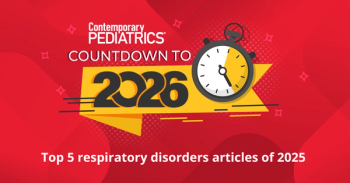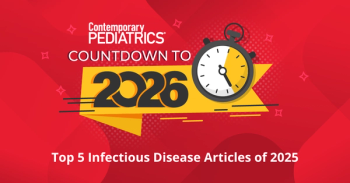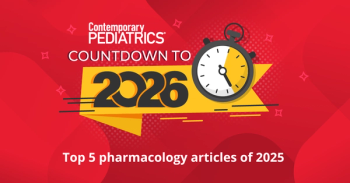
- Consultant for Pediatricians Vol 6 No 10
- Volume 6
- Issue 10
Geographic Tongue
The sharply demarcated, smooth red plaques on this 3-year-old's tongue had been present for several months. The child initially refused to stick out his tongue. He cooperated after he was offered a lollipop (with the stipulation that "the wider he opened his mouth, the bigger the lollipop he would receive").
The sharply demarcated, smooth red plaques on this 3-year-old's tongue had been present for several months. The child initially refused to stick out his tongue. He cooperated after he was offered a lollipop (with the stipulation that "the wider he opened his mouth, the bigger the lollipop he would receive").
Also known as benign migratory glossitis, geographic tongue results from transient atrophy of the filiform papillae and the surface epithelium. The lesions may be single or multiple; often they have elevated gray margins composed of intervening filiform papillae, which are increased in thickness.1 Patients may perceive a mild burning or irritation of the tongue; some report that the condition is exacerbated by stress or by hot or spicy foods. Onset is rapid, and the pattern may change over time.
Geographic tongue is associated with scrotal, or fissured, tongue in nearly half of affected patients. Other associated conditions include atopy, anemia, diabetes mellitus, Reiter syndrome, seborrheic dermatitis, and pustular psoriasis (which has similar histological features).1
No therapy other than reassurance is necessary. *
References:
REFERENCE:
1.
Darmstadt GL. Disorders of the mucous membranes. In: Behrman RE, Jenson HB, Kliegman R, eds.
Nelson Textbook of Pediatrics.
16th ed. Philadelphia: WB Saunders; 2000:2027.
Articles in this issue
about 18 years ago
Varicellaabout 18 years ago
Bell Palsy From Lyme Meningitisabout 18 years ago
Coronal Hypospadiasabout 18 years ago
ADHD: More Prevalent Than We Thought?about 18 years ago
Chronic Recurrent Multifocal Osteomyelitis: REFERENCES:about 18 years ago
Vaccine-Associated Herpes Zosterabout 18 years ago
Incontinentia Pigmenti and Hypomelanosis of Itoabout 18 years ago
Green-Colored StoolNewsletter
Access practical, evidence-based guidance to support better care for our youngest patients. Join our email list for the latest clinical updates.




